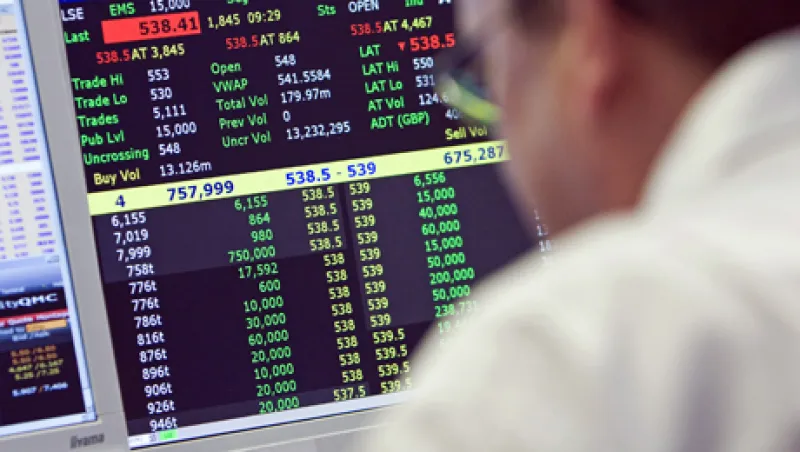Defying appearances that the market for alternative trading systems is overcrowded, Citibank announced the launch this week of a platform called Citi Cross that it says will enhance access to liquidity for a wide range of equity market participants.
Citi touted the venue as “the first dark pool to leverage an even-allocation matching algorithm to fill orders on a per-participant basis.” In other words, Citi Cross caters to a class of active traders who may not be optimally served by the “arms race” in which orders are filled and prorated according to their “queue position,” or price-time priority.
Instead, the system is designed to treat all participants equally, filling orders based on the price point, regardless of timing.
“Citi Cross allows our clients with varying trading styles to provide a valuable source of liquidity to institutional and retail flows,” Hannes Greim, head of Citi Cross ATS, said in Monday’s announcement. “By mitigating those factors which have generated market microstructure advantages on other platforms, we have created a venue on which historically eschewed flows can interact in a controlled, equitable and even manner.”
The New York bank’s gambit suggests there is still room in the marketplace for new alternative platforms, particularly if targeted at identifiable demand from well-defined niches. Not alone among leaders in the advanced institutional trading arena, Citibank is operating more than one dark pool: Citi Cross complements the previously established Citi Match.
Credit Suisse, whose Advanced Execution Services unit is responsible for Crossfinder, the most active dark pool, has diversified its platform in several directions, one being Light Pool, an electronic communications network that is designed to benefit long-term investors and keep speculators out.
Citi had been telegraphing its plans for Citi Cross as early as July 2011, when Dan Keegan, then head of electronic trading, told Traders Magazine Online that the new, undisplayed-price pool was in beta testing, with an eye toward giving high frequency traders access to “an amalgamation of our retail, institutional and broker-dealer flows at a point in the queue that works for all parties involved.”
Keegan, now global head of cash equities, said this week: “Innovation is core to our development and what clients have increasingly come to expect from Citi as we continually expand our product breadth and service offerings. Citi Cross levels the playing field, affording a low-latency platform with commonality in how price improvement is shared across all market participants.”
Cheyenne Morgan, a New York–based analyst with the research firm TABB Group, said Citi Cross is “interesting because this is a saturated market that is quite fragmented.” In TABB’s Liquidity Matrix, which tracks alternative trading system volumes, Citi Match is in the second tier, with a 25 million shares-per-day average as of August. That is one third to one fourth the volume of the industry-leading platforms, operated by Credit Suisse and Goldman Sachs Group.
Dark pools, Morgan noted, may differentiate themselves by pricing or functionality or the kind of participants they seek to attract, but they ultimately succeed on their ability to aggregate liquidity. That suggests there is some limit to the number of alternative trading venues, which is apparently not yet reached.
In a recent discussion of whether markets have become too fast, fragmented and competitive, TABB Group founder and CEO Larry Tabb observed: “There are 13 [U.S.] exchanges, about 50 dark pools and many internalizing brokers that can match buyers and sellers. To ensure the best match, sophisticated order routers need to examine many trading venues . . . While checking many venues complicates execution, markets can fragment in other ways, including price and time. The more price points, the more missed trades.”
Dan Mathisson, Credit Suisse’s head of U.S. equity trading and architect of the Advanced Execution Services business, told a House Financial Services subcommittee hearing on June 20: “No one is compelled to use a dark pool. We believe that the 14 percent market share that dark pools have collectively achieved is a sign that investors have found they are beneficial” — essentially performing an ages-old order-matching function for investors who prefer not to expose their intentions on exchanges.
Mathisson pointed out that despite enjoying cost, capital and revenue-generating advantages over dark pools, exchanges have not driven them to obsolescence. “The primary reason,” he contended, ”is that most of the remaining large ATSs are owned by a single broker-dealer, and current regulatory restrictions make it impossible for a broker-dealer to own more than 20 percent of an exchange.” Eliminate the 20 percent maximum, Mathisson said, and “most of the major ATSs would choose to become exchanges, after which the playing field would be level.”






